FreeNAS Mini XL+ Software
Many STH readers are familiar with FreeNAS on some level. Either they are current users, or they have used FreeNAS in the past. This is an embarrassing aspect to admit, but while writing this review, this section was not in the first draft. FreeNAS is so ubiquitous in environments from VMware installations to offices to home labs that I took that for granted that our readers knew the feature set. We are going to look at a few of the features, but the great part about FreeNAS is that you can download the software and put it in a virtual machine or on an old PC to give the interface a try. With some solutions, there is a high degree of vendor lock-in. This open-source model is the opposite.
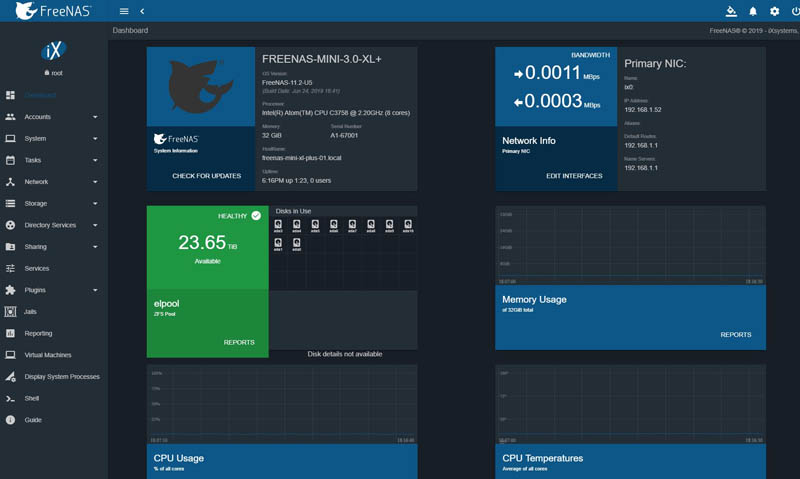
The newer FreeNAS 11.2-U5 is what we are using for this review. The FreeNAS team has already stated that the FreeNAS 11.3 generation will have better wizards and performance. Still, the newer dashboard is much more modern than what a legacy FreeNAS user would have seen.
One can see, in our test unit we have a boot SSD, two cache SSDs, and eight 4TB WD Red hard drives. This is the 32TB capacity option on Amazon with the write cache added.
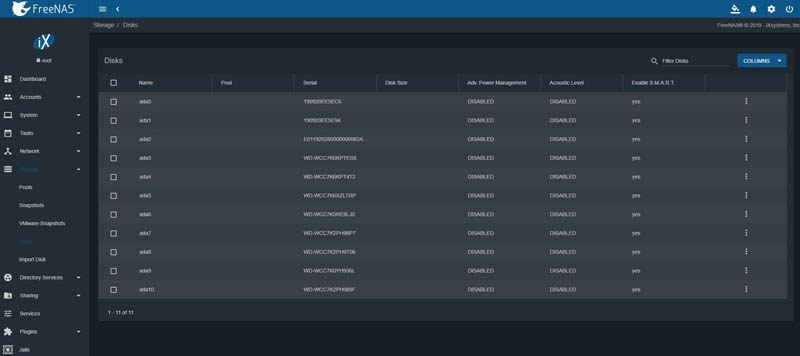
There are wizards to use a GUI to manage the ZFS pools. If you do not want to learn the ZFS command line, this makes things much easier. Compression is enabled by default on the pools which we like.
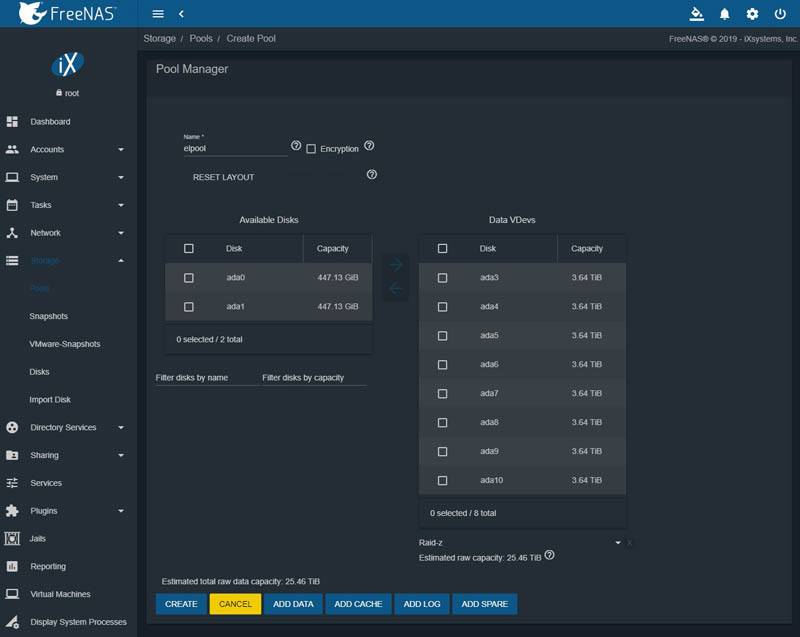
Some of the labels could frankly be better. For example, you may have noticed that in the “Disks” view, “Disk Size” was not populated, but FreeNAS has the capacity here. Likewise, it is a bit hard to discern which SSD is for write cache (ZIL) and read cache (L2ARC) when they have the same capacity. Note again, the ZIL should have been over-provisioned but we had a pre-production model. In the future, it would be great if FreeNAS automatically populated these.
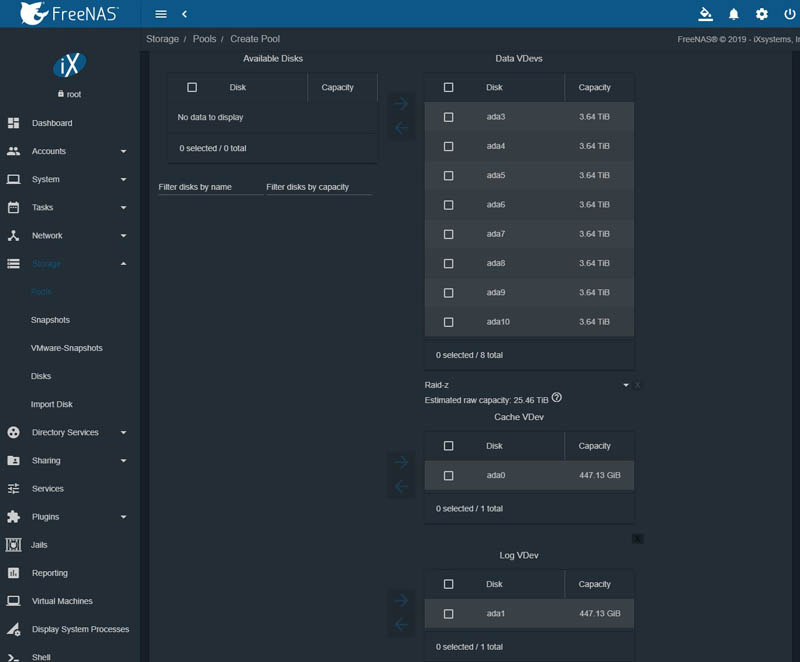
There are a number of plugins available. Most focus on file transfer, backup, and sync. Having an easy way to install NextCloud, Bacula, or Asigra backup, as examples, are a big bonus to IT admins.
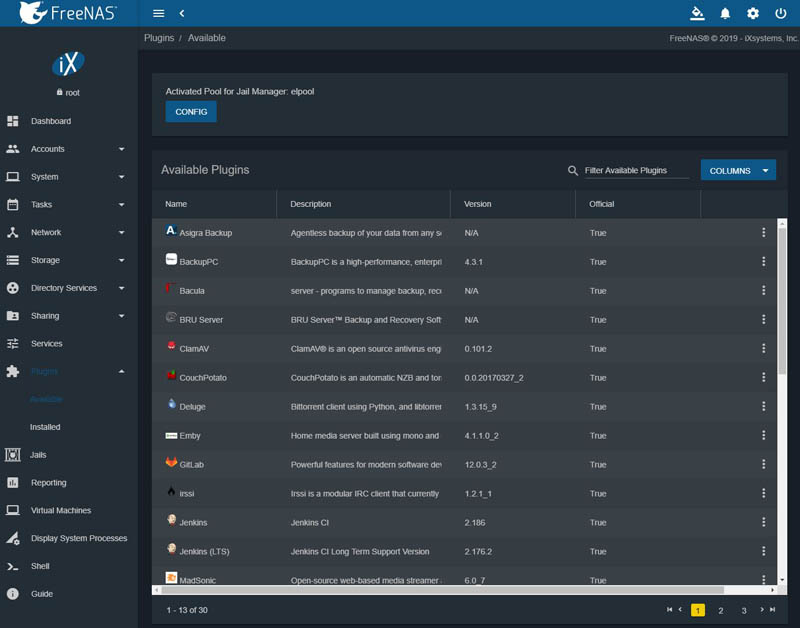
The Intel Atom C3758 SoC is fast. Our FreeNAS Mini XL+ also came with 32GB of memory with up to 64GB as a standard option. Storage tends to be a fairly low CPU intensity application which means the Mini XL+ has a lot of additional CPU power, and potentially RAM. One can use that for things like hosting VMs via bhyve or Docker using Rancher as a Web GUI front-end.
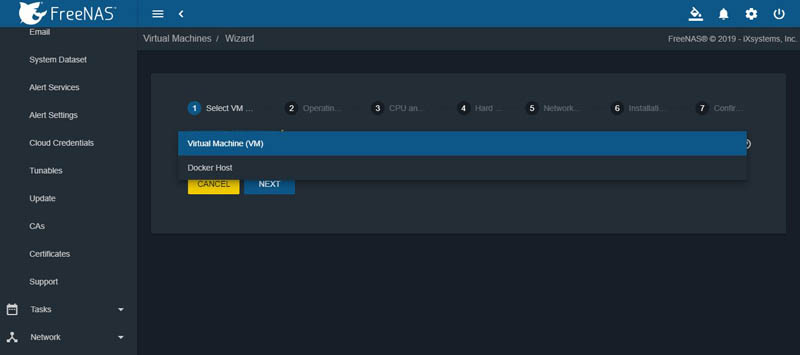
If you need to not just have local storage at remote sites for applications such as video surveillance, but also to host applications at the edge, then this is major functionality. One can use containers or VMs at the edge leveraging the extra resources in the FreeNAS Mini XL+.
FreeNAS Mini XL+ IPMI Management
There is one feature that sets the FreeNAS Mini XL+ apart from many of the consumer alternatives from companies like Synology and QNAP: IPMI management. IPMI management is integrated into the web GUI for FreeNAS, you can find your DHCP assigned IP address there and even change VLANs.
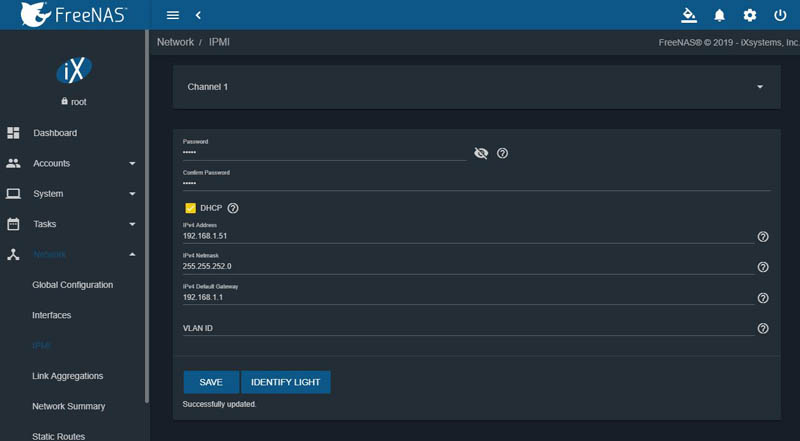
One small item we would love to see changed is the hostname. Here is a look at the FreeNAS and IPMI DHCP entries in pfSense. (We need to stay FreeBSD-based right?) You can see the primary web management is labeled “freenas” as the hostname. The IPMI interface is a Supermicro default blank. It would be great to see a future enhancement where these had a unique identifier similar to how HPE iLO 5 hostnames are based on the serial number.

Logging into the Supermicro IPMI management yields a familiar look and feel. One can do things here such as power up/ down the NAS. There is HTML5 iKVM for remote management. One can also check server health and remote mount media for a clean OS installation if it ever came to that.
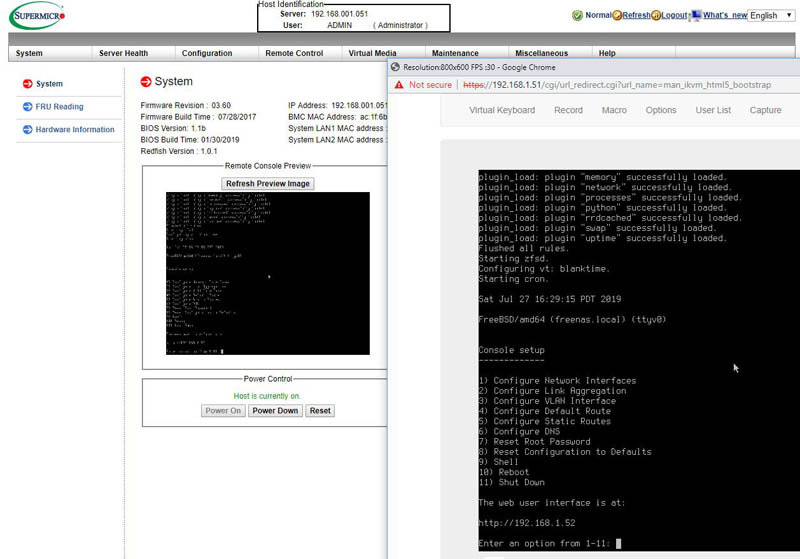
The IPMI and OOB management features are excellent here. With a consumer NAS, one of the biggest concerns is what happens if the unit fails. With out-of-band remote management, an admin can remotely diagnose without having to be on-site. Also, if FreeNAS were ever to not be an option, this gives one the flexibility to install FreeBSD or Linux directly on the FreeNAS Mini XL+ remotely. From a business continuity planning perspective, that is a big bonus of this type of management.
Utilizing Supermicro also means that one can bring the same automation and tooling one would use for Supermicro server management such as SUM and IPMIview to work with the NAS unit.
iXsystems TrueCommand
Recently the iXsystems TrueCommand tool was launched to manage multiple FreeNAS servers using a single tool. For those who are managing a single FreeNAS machine, this is perhaps not necessary. For those managing two or more TrueNAS units (the company’s supported higher-end storage) and/or FreeNAS appliances, this brings storage management into one place.
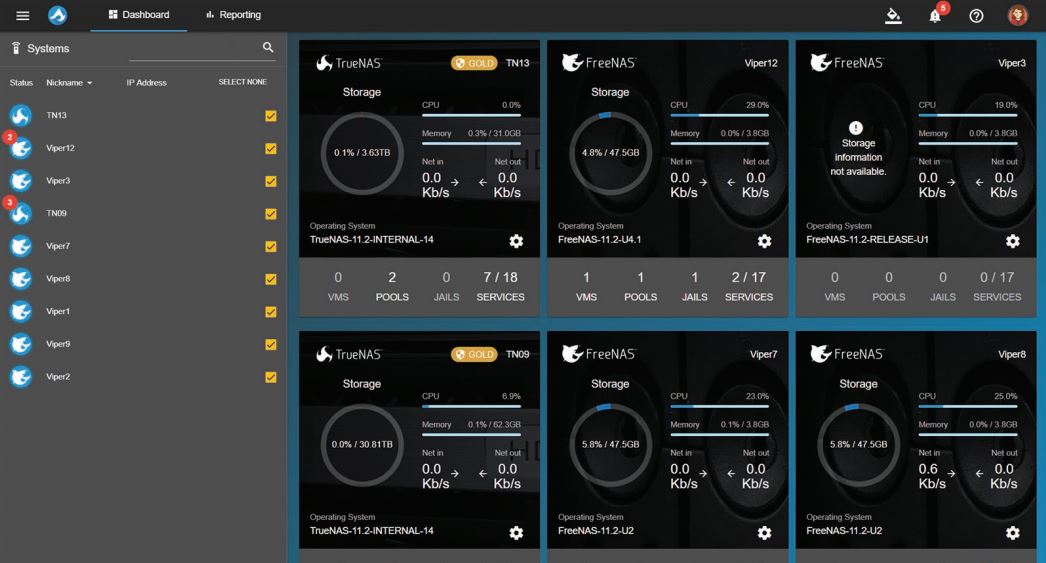
In order to get this review out quickly after launch, we had to split out our TrueCommand review. We are going to do a full review with the Mini XL+ and TrueCommand in the near future. Stay tuned to STH for that.
Next, we are going to look at the FreeNAS Mini XL+ performance before moving to the power consumption, noise, and our final words.




Maybe I missed it, but I didn’t see the RAIDZ-level configuration.
Well-done review! Extraordinarily thorough. I’ve always thought of these as storage only but you’ve got me thinking about replacing some lightweight VM hosts too.
Misha E. they’ve got RAID-Z on pg3. We use freeNAS and the setup part RAID-Z is very close to RAID-Z2 other than one select box.
Thanks, Stanley.
I wish they’d have a Xeon D option too.
Another great STH review. I’d have liked to have seen compatibility testing with (4) 32gb dimms and (4) 64gb dimms.
Why’d you use 4TB drives not 8 or 10TB drives? I mean if you’re going 8-bay instead of 4-bay wouldn’t you want more capacity than a 4-bay offers? 4x10TB=40TB. 8x4TB=32TB. In your RAIDZ2 you’ve got 20TB usable which is RAID10 like and you’d have 30TB in RAIDZ so more than this 8-bay. You’d also save a load on power and noise with helium 10’s instead of air 4’s.
Supermicro needs that dual fan bracket on their CSE 721
Can anyone tell me what HDD model they use? Thanks
Great review. I just placed an order for a low end TrueNAS X20, maybe I should’ve saved some cash and gotten a pair of FreeNAS Mini XL instead 😀
What SuperMicro Board is that running, and if someone has a failed existing freenaz with the asrock board, could they replace it, it’s the same size, but would the backplane be the same ?
@Lukas,
no idea; the configuration/order form on iXSystems online shop does not reveal details about the drives they ship. The review here mentions that the 4 TB drives shipped were some WD Red’s. But then again, since the order page does not disclose any particular drive model that is being shipped, iXSystem might at any time decide to ship different drive models from different manufacturers if they deem those different drives fit for purpose, without you knowing about it until the device is being delivered.
Fortunately, if you don’t want to order a “mystery box”, the FreeNAS Mini’s can also be ordered disk-less (without any drives), leaving it to you to buy drives of your choice from your preferred vendor(s)…
Drive temperatures in that chassi?
What was the RAM configuration? Were there empty slots for upgrading or would you have to replace the sticks that come with the unit?
Will there be an in-depth review of the FreeNAS Mini E as well?
@Lukas, the hard drives are 4 TB WD Reds. Hard drive selection is discussed on page 4 of the review.
@Will I’m looking on P1 and it’s 2x16g sticks and there’s 4 slots so 2 slots open.
ZFS has integrated QuickAssist (QAT) acceleration on some platforms. I am unsure if your version of FreeNAS has that capability. I would be highly interested in seeing the performance of the QAT when QAT-capable versions of ZFS are used. Since it accelerates raidz calculations and compression, this could be very valuable at extending the usable SSD capacity, without sacrificing (much) performance.
We have this in our office. It works flawlessly, my only comment is that those 2 front fans ave quite noisy. I wanted to put this NAS on my desk and I ended up moving it to other room just for the noise.
From a maintenance stand point, I’m curious as to how updates and patching is handled.
While this includes the OS, I’m also wondering about the ipmi and how ixsystems gives us a single point of service.
Background: Supermicro has had it’s share of ipmi security issues and I’ve often found them to lack timely patching and short eol windows. (Ivey Bridge servers are still in production environments, I’d expect ipmi patches to be made available).
Does ixsystems take over from Supermicro?
I have a custom build with the same mainboard Supermicro A2SDi-H-TF and 32GB RAM ECC. Boot drive is a mirrored SSD (Sandisk 120GB). 8x WD Red 8 TB in a RAIDZ2 configuration. I use a Samsung 970 EVO Plus 500GB (onboard NVMe M2 slot) as L2ARC cache and still get only 500-600 MB/s read speed. Then i put a second Samsung 970 EVO Plus 500GB (in PCIe 3.0 x4 slot with Lycom DT-120) as ZIL /SLOG cache and only get 400-550 MB/s write speed. So then i tried to use the second Samsung 970 EVO Plus 500GB as a single drive to get the full speed of the NVMe SSD for video editing over LAN. Even as a single NVME SSD drive the read and write speed are limited to 500-600 MB/s.
I use a Mac Pro 4.1 (flashed to 5.1, PCIe 2.0 x4) with a Sonnet 10G-BaseT PCIe card + Netgear XS505M or the SFP+ approach with MikroTik CRS305 + Sonnet 10G SFP+ PCIe card. Always 500-600 MB/s.
With 8 WD Red (5.400 rpm) in RAIDZ2 configuration i was expecting at least 800-900 MB/s read speed and 700-800 MB/s write speed. Adding NVMe SSD as L2ARC and ZIL / SLOG cache did not boost the performance to saturate the 10 GbE connection.
With iperf3 performance test in both direction i get around 9 Gbit/s. For the read and write speed test of SMB, AFP and NFS shares and iSCSI volume i use BlackMagic Speed Test.
If anyone has any suggestions would be nice to hear.
Zoran,
can you get intel optane 900p drive instead of samsung?
Would be better, than samsung.
I have one installed as zil device, perfect, the 10GBE can be fully saturated by smb.
Patrick,
i would like to get this ablecom cs t80 case to upgrade my 4 bay rig. 🙂
I think supermicro and ixsystems gets chassis from the same manufacturer, from ablecom.
The 4 bay case of supermicro is exactly same, than 4 bay freenas case of ixsystems.
I am considering purchasing this computer, however, I am looking forward to running TrueNAS Core running on Debian.
Does anyone know if this computer will support a switch to the new software?